Spirit: Stallion of the Cimarron (2002)

Dreamworks’s third hand-drawn animated movie, which tells the story of a wild mustang in the yet to be tamed American West, presents me with one of the hardest challenges for a reviewer: something that doesn’t have a lot obviously wrong with it and even quite a bit good, but which I can’t really say I like.
I admire, well, respect the movie for committing to its difficult to market artistic vision, never giving dialogue to the horse characters, who dominate the story, except for the first-person voice over narration (supplied by a somewhat miscast Matt Damon, who delivers lines like “And so I grew from colt to stallion as wild and reckless as thunder over the land, racing with the eagle, soaring like the wind” with roughly the same passion of someone reporting traffic.) It relies almost entirely on the animators to personify the horses and while I hesitate to say they invest them with much in the way of specific personalities, they do give them a lot of emotion.

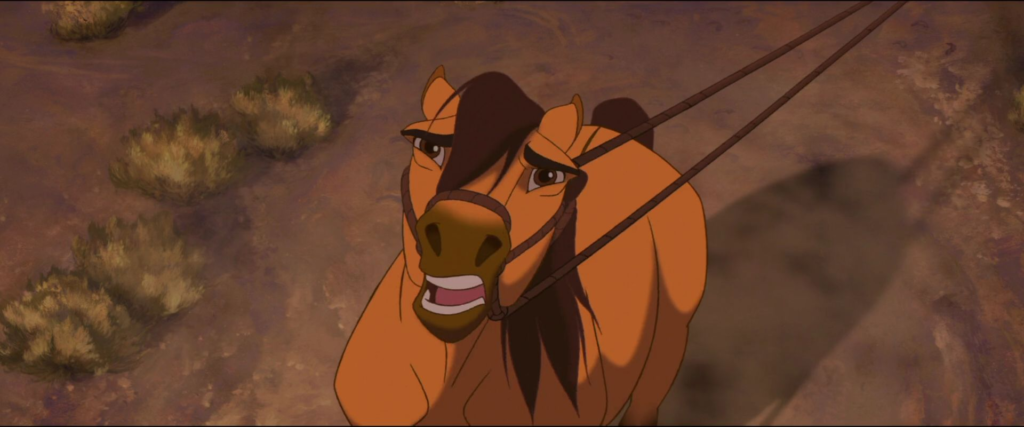

Even the human characters don’t really rely on dialogue much. For a Dreamworks movie, there’s a shocking lack of celebrities in the cast. And it’s also the least humorous film in their canon, even more so than The Prince of Egypt. (The fact that their last hand-drawn movie had been the almost purely comic Road to El Dorado reinforces my claim that they didn’t really have a formula for them the way that Disney did.) Spirit: Stallion of the Cimarron aims for epic grandeur and raw emotional power. Sometimes it achieves it. The opening montage, for one, is pretty breathtaking.
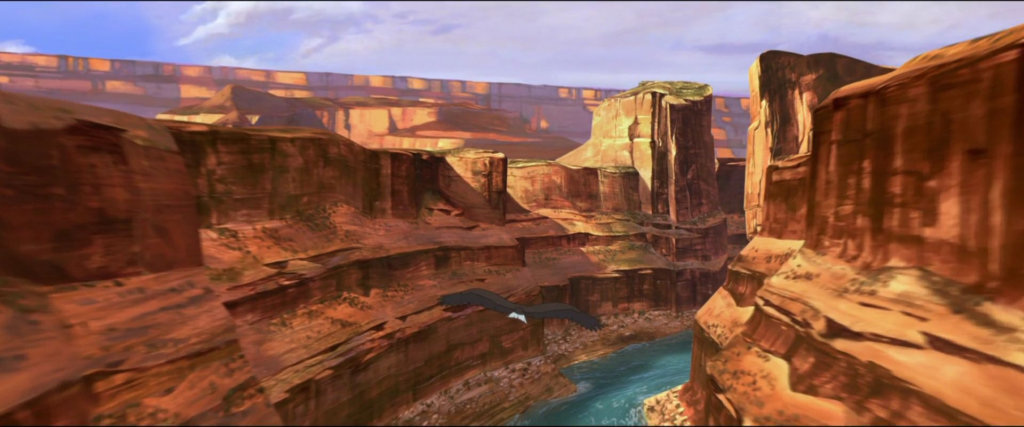
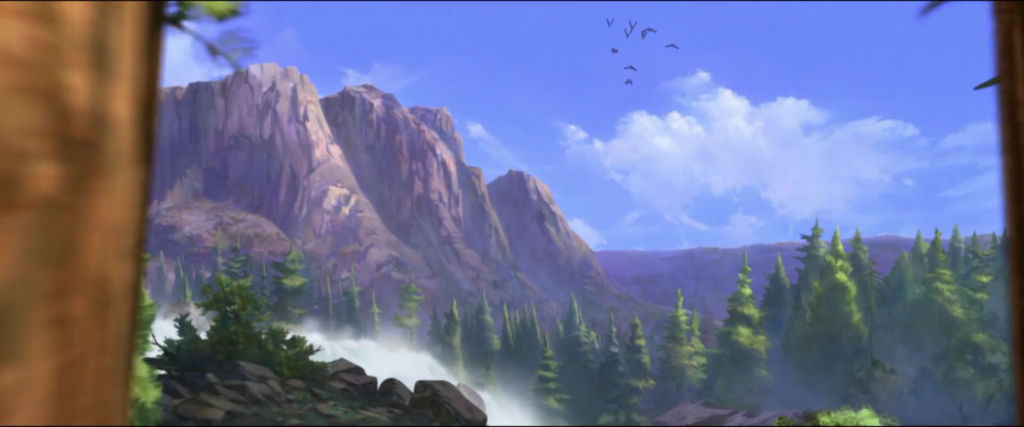

Kelly Asbury and Lorna Cook had worked on an impressive list of animated films prior to directing this one and it’s exciting to see what story artists and animators will do when they finally get put in the director’s seat.[1]Somewhat sadly, this would be the last time Cook sat there. All in all, they do a good job telling this story.
I just don’t think that story is very good.
The first half hour or so, showing Spirit’s[2]He’s only named at the very end, but I have to call him something. coming of age in the wilderness, his capture by the American cavalry, and his defiant resistance to being broken, works pretty well for me. But once he escapes only to be captured by the Lakota, the movie’s dramatic interest just kind of peters out. You see, the Lakota, unlike the cavalry, are supposed to be sympathetic but we’re not supposed to want Spirit to become contented living with them. We’re supposed to want him to be reunited with his herd. Theoretically, that makes this part of the story more interesting dramatically, as, in Spirit the narrator’s words, “for the first time, my heart was torn in two.” But, in practice, it’s just kind of boring. We’re not really rooting for anyone or rooting against them either. Before too long, the cavalry attacks the Lakota camp and there’s quite a bit of action in the final third, but I’d already lost interest in the characters by that point.
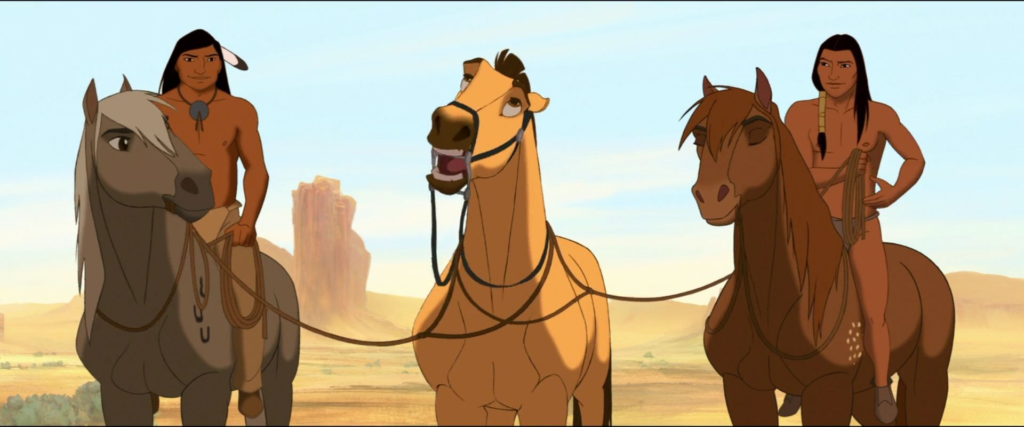
Maybe it’s the music that lets the movie down. Hans Zimmer’s score is fine but not at all memorable. There are also some rock songs by Bryan Adams, about which I can’t think of a single thing to say. Movies whose main goal is to be emotionally resonant this way arguably live and die by their soundtracks.
In my opinion though, the real problem is the characters. I wrote before that the protagonist and the antagonist of The Prince of Egypt were complex and compelling but that the supporting characters were pretty shallow. (I wouldn’t say any of them were terrible characters per se, just not particularly interesting ones.) Well, Spirit has a protagonist that’s fine at best, a dull antagonist and supporting characters that are even shallower. All the relationships are developed perfunctorily. Maybe if the movie had been longer and slower paced, it could have made them more interesting. But what we see doesn’t intrigue me enough to make me wish for more of it. There’s also nothing like The Prince of Egypt‘s nuanced depiction of its Egyptian villains.[3]Well, the third act does briefly show a white guy who’s gentler with Spirit and less offputtingly macho than the rest. This technically adds a bit of nuance to the movie, but it doesn’t … Continue reading Every one of the cavalry’s horses that we see is a downtrodden miserable soul, who welcomes Spirit’s rebellion, while all of the Lakota’s horses seem content with their lives to the point of bliss. Realistically, wouldn’t some of them be still in the process of being broken and some of the cavalry’s horses resigned to domestication? The fact that I thought about this instead of enjoying the movie’s moral simplicity shows it wasn’t working for me.
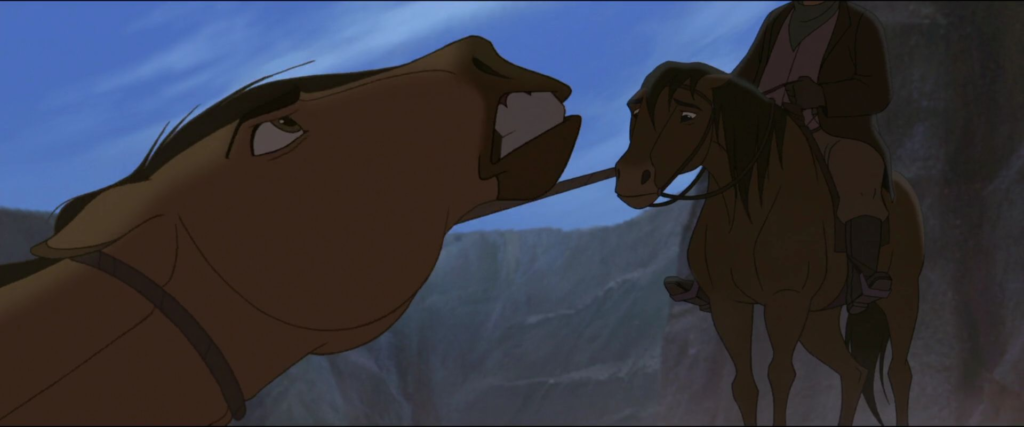

I guess the aim was for an archetypal fairy tale quality and, hey, I love me some fairy tales. But not all fairy tales are created equal.
I have to give the movie credit for the character of the young Lakota brave, Little Crane (voiced by Daniel Studi), who bonds with Spirit, in that it’s very difficult to do a character of his nationality without being offensive and I haven’t heard of any Native people being offended by him.[4]If you’ve read any articles by some who are, feel free to send me a link. They’re probably more interesting than this blog post. Then again, if he were some kind of offensive stereotype, writing about him would be a lot more interesting. And I suppose I admire the movie for underplaying the character of the colonel (James Cromwell), who’s the main antagonist, and resisting the temptation to make him over the top. Then again, if he were a hammy cartoon baddie, he might be more memorable.

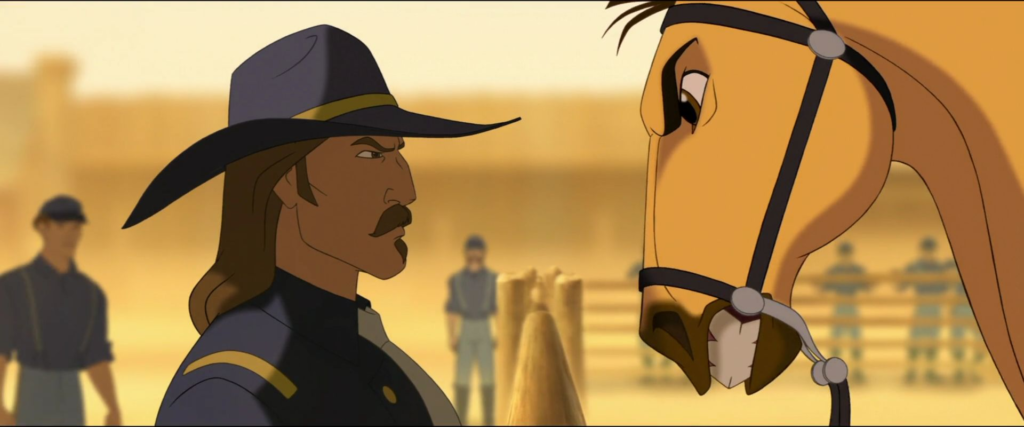
This quote from a review of a Disney animated film released the year before actually sums up my thoughts on Spirit: Stallion of the Cimarron quite well. “Midway through I found myself longing for a dancing gargoyle, a singing candlestick, a piece of toast wearing a diaper, anything to crack the classy sophisto-sheen that coats every frame — a little bit of tackiness would at least give (the movie) some life… It’s so swaddled in its own good taste that it sinks itself.” I began this post by praising Spirit for not pandering, but maybe the creators should have gotten off their high horse and pandered a little bit. Recently, Dreamworks released a computer animated sequel/loose remake called Spirit Untamed, which, judging by the trailer[5]I haven’t watched the film itself and am not in a hurry to do so., focuses more on the human characters, has more humor and action and is generally more kid/audience friendly. If I were a fan of the original, I’d be affronted. As it is, I wonder if it might be an improvement.
Stay Tuned
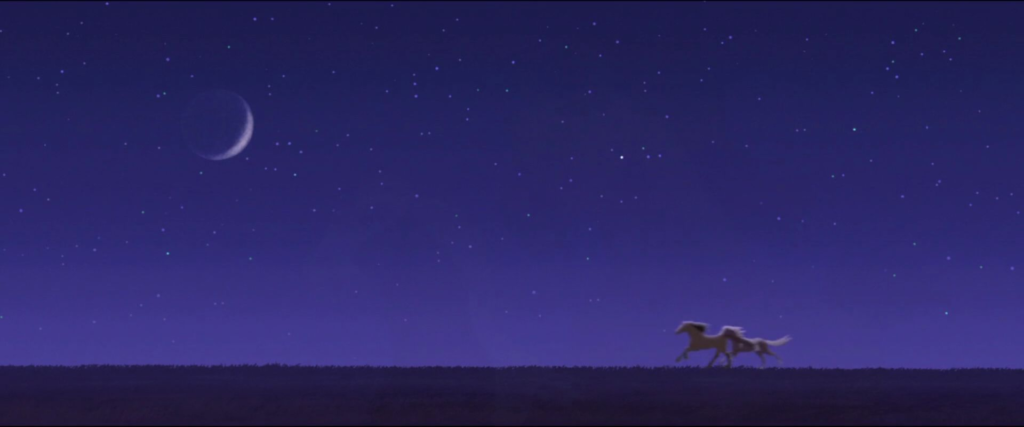
References
| ↑1 | Somewhat sadly, this would be the last time Cook sat there. |
|---|---|
| ↑2 | He’s only named at the very end, but I have to call him something. |
| ↑3 | Well, the third act does briefly show a white guy who’s gentler with Spirit and less offputtingly macho than the rest. This technically adds a bit of nuance to the movie, but it doesn’t make the man himself an interesting character. |
| ↑4 | If you’ve read any articles by some who are, feel free to send me a link. They’re probably more interesting than this blog post. |
| ↑5 | I haven’t watched the film itself and am not in a hurry to do so. |
